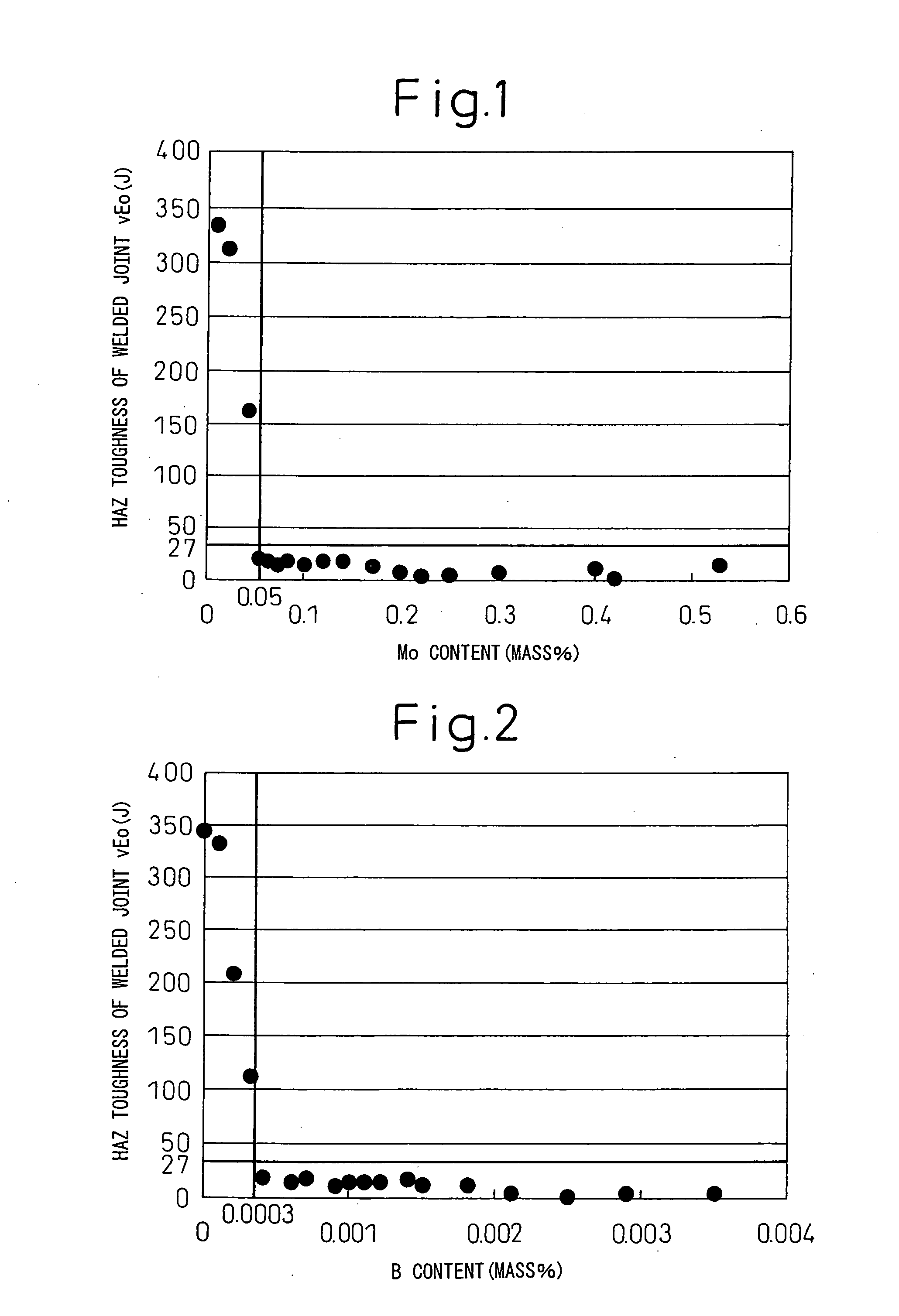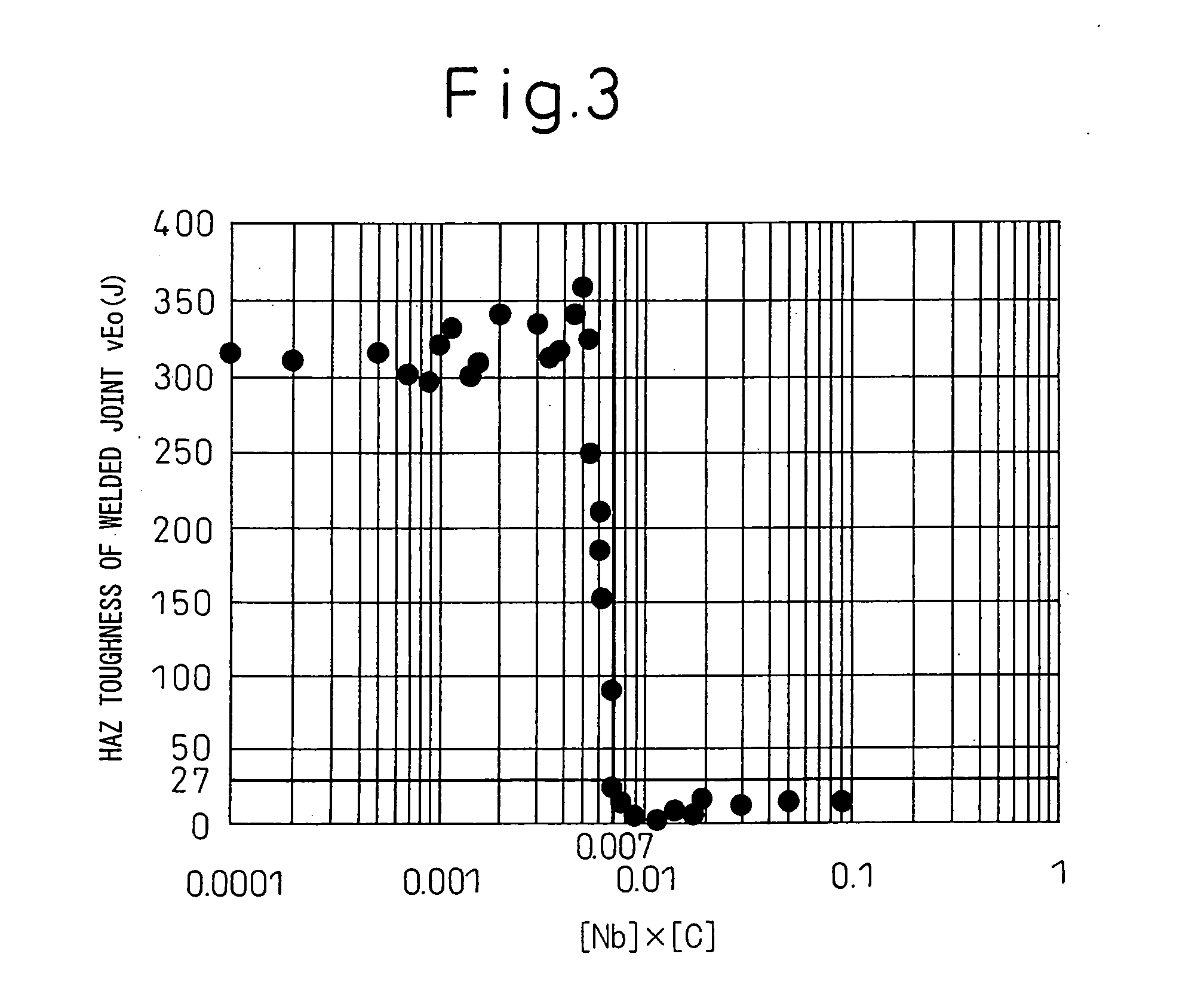Fire-Resistant Steel Material Superior in Haz Toughness of Welded Joint and Method of Production of Same
- Summary
- Abstract
- Description
- Claims
- Application Information
AI Technical Summary
Benefits of technology
Problems solved by technology
Method used
Image
Examples
examples
[0058]Below, examples of the present invention will be explained. In the examples, steel slabs of the steel compositions shown in Table 1 and Table 2 were heated at the temperatures shown in Table 3 and Table 4 for 1 hour, then immediately roughly rolled to obtain steel plates of 100 mm thickness at 1050° C. After this, the plates were hot worked or hot rolled at end temperatures (finishing temperatures) of the temperatures shown in Table 3 and Table 4. Specifically, the steel slabs of No. 4, No. 7, No. 10, No. 14, No. 51, No. 68, and No. 80 were hot worked by forging to obtain steel shapes with complicated cross-sectional shapes of maximum thicknesses of 15 to 35 mm. On the other hand, the other steel slabs were hot rolled to obtain thick-gauge steel plates of finished thicknesses of 15 to 35 mm. Further, the slabs were acceleratedly cooled by water cooling at the rates shown in Table 3 and Table 4 targeting 500° C. right after hot working or hot rolling. At this time, a noncontact...
PUM
| Property | Measurement | Unit |
|---|---|---|
| Temperature | aaaaa | aaaaa |
| Temperature | aaaaa | aaaaa |
| Temperature | aaaaa | aaaaa |
Abstract
Description
Claims
Application Information
 Login to view more
Login to view more - R&D Engineer
- R&D Manager
- IP Professional
- Industry Leading Data Capabilities
- Powerful AI technology
- Patent DNA Extraction
Browse by: Latest US Patents, China's latest patents, Technical Efficacy Thesaurus, Application Domain, Technology Topic.
© 2024 PatSnap. All rights reserved.Legal|Privacy policy|Modern Slavery Act Transparency Statement|Sitemap


